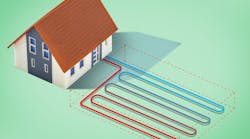Latest from Management
Sponsored
Everywhere one turns these days, someone is touting a “green” product, process or service. What is “green”? The easy answer is that anything that purportedly does its job in an environmentally sensitive manner (i.e.-maximizes energy usage, uses less energy, renewable resource or has little or no environmental impact) can be considered “green.” Whether or not such products, processes or service do what they claim to do, or are in point of fact “green,” is something each one of us must determine for ourselves.
We are right to be skeptical of the myriad dubious claims made by not only the purveyors of these products/services, but by a government which now mandates them. There was no serious debate on this matter. It was, quite simply, an edict from on high, never taking into account the financial impact on those who would be required to fulfill the edict.
Like a vampire, a government program is almost impossible to kill (think farm subsidies). So once it has been ordained that “green” is to be the standard for everything from paper clips to skyscrapers there is nothing the great unwashed can do but to comply. No matter its efficacy, if it’s “green,” it’s here to stay.
Rising to the challenge
For plumbers and HVAC contractors, diving into the “green” pool is good way to add an income stream to your shop, as well as moving the cutting edge of our trade into the 21st century. The challenge now is to change our normally skeptical mind set and embrace the new technology, insofar as it is profitable to do so.
In every trade magazine I read today, there are articles and advertisements for “green” products and systems. This was not so a mere ten years ago. With the government providing subsidies (read “your tax dollars at work”) for using “green” products or systems, it is presently economically feasible for homeowners and commercial interests alike to install “green” systems and equipment that will, ostensibly, lower energy costs and in some cases (solar power is one) provide actual earned income to the owners.
Take, for example, geothermal HVAC and water heating. Years ago, the term geothermal had us all thinking about places such as Iceland, where escaping ambient heat from naturally occurring hot springs and steam vents from the volcanoes that dot the island, were used for heating homes, water and producing electric power through steam generators.
Fast forward to today. The natural temperature of the earth at -5’(deeper for lower frost line areas) or so below ground is around 55° F to 60° F, day or night, the whole year around. Now, below ground temperatures vary according to soil type, density, moisture content, etc. but it’s a sure bet that the temperature range below ground is between those numbers.
Since the average comfort level for humans is 72°F, engineers have designed systems that take advantage of either the cooling or warming properties of the natural earth temperatures and brought that technology to us to sell. By burying piping below the earth and circulating either air or water through them, it is possible to either recover heat (for heating) or radiate it out (for cooling) thereby reducing or eliminating the energy required to heat or cool a structure. Heating or cooling either air or water from 55 degrees is a lot easier than heating it from 40 degrees, and takes a lot less energy.
Radiant heating, geothermal heat pumps and solar water heating have expanded the scope of products and services our industry can market. The advent of reliable equipment for system controls was the last building block needed for the expansion of these systems from experimental to the general marketplace. With advances in computer controls and microelectronics that loop has been closed.
Adding the income stream to your shop by expanding into the geothermal marketplace is a relatively easy thing to do too. It is still considered by the public to be exotic technology. When you can sell it (with tax credits) as a low cost, no cost or money-making proposition, you’ve really got something. Now, if only the housing market would cooperate, eh?
The learning curve
As with any type of new technology, there is a learning curve. You are going to have to make the investment in time, and money, to get good at installing and maintaining these systems. The payback is worth it, in my opinion.
Some of you might remember when you could pop the hood of almost any car or truck out there, fiddle with the carburetor or the points, or whatever the problem might have been, and get the thing running in short order. Care to try that today? Even fair to middling shade tree mechanics are wary when getting under the hood of a ten- to fifteen-year-old vehicle. Why? Because the technology now requires specialized training in order to properly diagnose and solve the problem.
So it will become with the newer “green” technologies. It’s not getting any easier to make a buck out there. Learning how to install and service this new technology makes you that much more indispensable to your customers. Think about what it costs to have your vehicles worked on at the garage these days. Technology marches on. You can either ride the crest of the wave or be dragged along in the current. Either way, if you want to stay in business, you’re going to have to learn to swim.
The Brooklyn, NY-born author is a retired third generation master plumber. He founded Sunflower Plumbing & Heating in Shirley, N.Y., in 1975 and A Professional Commercial Plumbing Inc. in Phoenix in 1980. He holds residential, commercial, industrial and solar plumbing licenses and is certified in welding, clean rooms, polypropylene gas fusion and medical gas piping. He can be reached at [email protected].
Al Schwartz | Founder
The Brooklyn, N.Y.-born author is a retired third generation master plumber. He founded Sunflower Plumbing & Heating in Shirley, N.Y., in 1975 and A Professional Commercial Plumbing Inc. in Phoenix in 1980. He holds residential, commercial, industrial and solar plumbing licenses and is certified in welding, clean rooms, polypropylene gas fusion and medical gas piping. He can be reached at [email protected].


